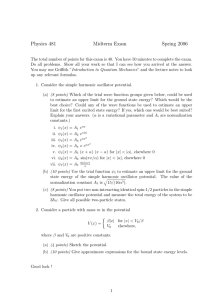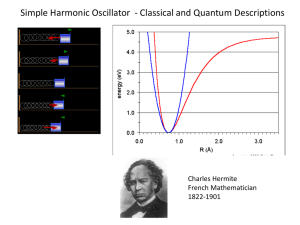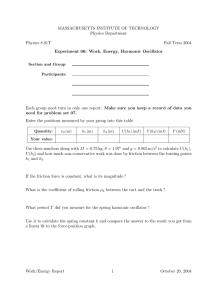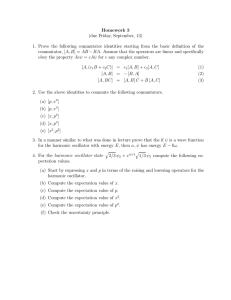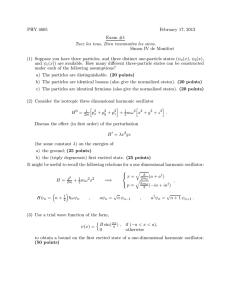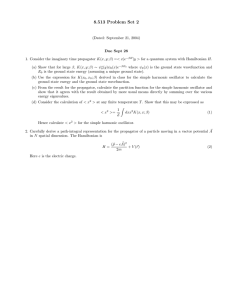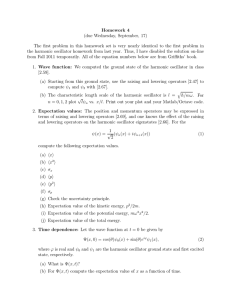Chapter 5. Exercises
advertisement
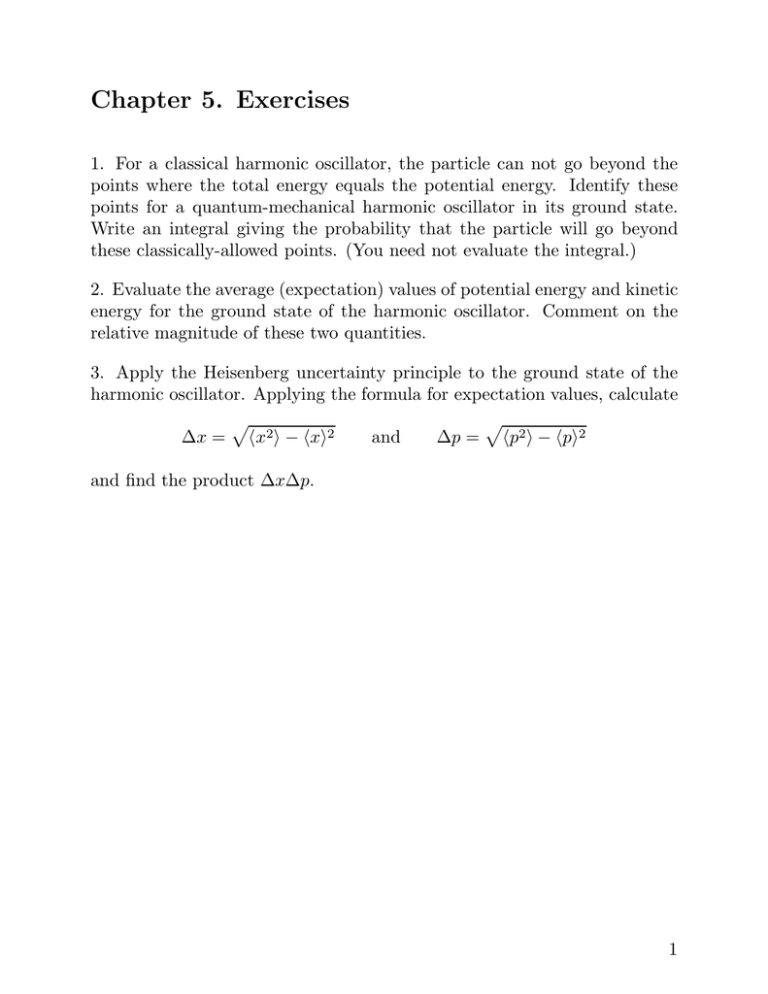
Chapter 5. Exercises 1. For a classical harmonic oscillator, the particle can not go beyond the points where the total energy equals the potential energy. Identify these points for a quantum-mechanical harmonic oscillator in its ground state. Write an integral giving the probability that the particle will go beyond these classically-allowed points. (You need not evaluate the integral.) 2. Evaluate the average (expectation) values of potential energy and kinetic energy for the ground state of the harmonic oscillator. Comment on the relative magnitude of these two quantities. 3. Apply the Heisenberg uncertainty principle to the ground state of the harmonic oscillator. Applying the formula for expectation values, calculate p p ∆x = hx2 i − hxi2 and ∆p = hp2 i − hpi2 and find the product ∆x∆p. 1 Solutions to Exercises 1. The turning points for quantum number occur where the kinetic energy equals 0, so that the potential energy equals the total energy. For quantum number n, this is determined by µ ¶ 1 2 1 kx = n+ h̄ω 2 max 2 recalling that ω = p k/m and α = √ mk/h̄, we find x2max = (2n + 1) √ h̄ (2n + 1) = α km Therefore P (xmax ≤ x ≤ ∞) = P (−∞ ≤ x ≤ −xmax ) = Z ∞ xmax |ψn (x)|2 dx [Optional: For n = 0, Z ∞ ³ ´1/2 Z ∞ α 2 −αx2 −ξ2 √ Poutside = 2 e dx = e dξ = erfc(1) ≈ 0.158 √ π π 1 1/ α where erfc is the complementary error function. This result means that in the ground state, there is a 16% chance that the oscillator will “tunnel” outside its classical allowed region.] 2. 2 ψ0 (x) = (α/π)1/4 e−αx /2 , α = (mk/h̄2 )1/2 Using integrals in Supplement 5, hV i = Z ∞ −∞ ψ0 (x) µ 1 2 kx 2 ¶ ψ0 (x) dx = k 1 1 = h̄ω = E0 4α 4 2 2 hT i = Z ∞ ψ0 (x) −∞ µ h̄2 − 2m ¶ ψ000 (x) dx = 1 E0 2 Thus the average values of potential and kinetic energies for the harmonic oscillator are equal. This is an instance of the virial theorem, which states that for a potential energy of the form V (x) = const xn , the average kinetic and potential energies are related by hT i = n hV i 2 3. The expectation values hxi and hpi are both equal to zero since they are integrals of odd functions, such that f (−x) = −f (x), over a symmetric range of integration. You have already calculated the expectation values hx2 i and hp2 i in Exercise 2, namely 1 hx i = 2α 2 h̄2 α hp i = 2 2 and Therefore ∆x∆p = h̄ 2 which is its minimum possible value. 3

